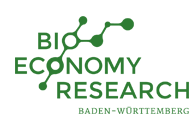Food matrix- and process design for foods from microalgae ingredients
Many microalgae species possess the ability to accumulate high amounts of proteins and lipids in their cells during phototrophic and heterotrophic cultivation. The aim of the project was to evaluate the suitability of microalgae derived proteins and lipids as food ingredients.
The department Food Physics and Meat Science studied the technofunctionality of microalgae proteins. As a first part of the project, process designs to liberate and fractionate proteins from different microalgae strains (Chlorella vulgaris, Chlorella protothecoides (heterotroph), Chlorella sorokiniana (heterotroph), Phaeodactylum tricornutum, and Nannochloropsis oceanica) were investigated. Two approaches yielded extracts with protein contents ranging from 26 wt% to 50 wt%: A precipitation approach and a minimal processing approach using only mechanical processing. As a second part the following technofunctionalities of the proteins were studied: protein solubility, emulsification, gelation, and sensory properties. Proteins from C. protothecoides showed a unique solubility profile with a high solubility in the entire pH-range. These proteins were able to stabilize emulsions in the acidic pH-range and at high salt concentrations without possessing an extensive bitterness. These properties qualify them as promising ingredients for beverage formulations. The proteins of C. sorokiniana were also able to stabilize emulsions and, remarkably, were able to induce gel formation during a heat treatment. These properties could be useful to enhance the structure of foods. These two examples underline that microalgae proteins have a substantial potential to become new technofunctional food ingredients.
The department Process Engineering and Food Powders studied technologies for encapsulation of oils in order to protect valuable polyunsaturated fatty acids from oxidation. New methods have been established to characterize encapsulated lipid powders regarding microstructure by time domain-nuclear magnetic resonance. It was shown that stability to oxidation depends on distribution of oil in the particle, solubilized O2 and especially oxygen diffusion. Moreover, process technological knowledge for the production of encapsulated systems was generated, that can be used to optimize particle structure and oil distribution.
| Project title | Food matrix and process design to optimize the quality of food from microalgae ingredients |
| Institution | University of Hohenheim, Institute for Food Science and Biotechnology |
| Research group | Prof. Dr. Jochen Weiss, M.Sc. Lutz Großmann, M.Sc. Laixin Dai (Dept. Food Physics and Meat Science) Prof. Dr.-Ing. Jörg Hinrichs (Dept. Soft Matter Science and Dairy Technology) Prof. Dr.-Ing. Reinhard Kohlus, M.Sc. Annika Linke (Dept. Process Engineering and Food Powders) |
| Project status | completed |

